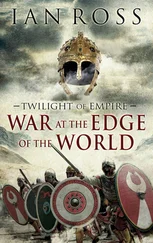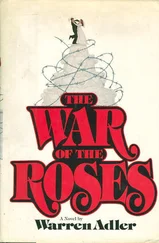Although Slovyansk has never been a prosperous or lively city, this time I have seen real destitution and despair. When Ukrainian forces entered the city on July 5, some residents had not eaten bread for days. There were lines in front of the City Council building where humanitarian aid was provided. Even now a group of people is standing there. They want to know where they can obtain any assistance. According to Zorian Shkiryak, an advisor to the minister of the interior, food is now distributed in the neighborhoods. So that people wouldn’t have to wait before the City Council building. However, the relief doesn’t reach everyone. Walking on the street, I meet a woman who asks me for water. She has funnels and a bucket. Every now and then bottled water appears in the shops, but there is very little and not everyone has money to buy it. She asks me for a little water.
“It has never happened before that everything was cut off,” she says and starts crying. There is no electricity or gas in the city. Yet, Shkiryak guarantees that the city will get back on its feet soon. Water repair is taking place, and in the next few days it will be restored. Electricity restoration may take a little longer. The authorities kept their word, and it did take a little longer. For Kiev, Slovyansk is a poster child. Its function is to convince Donbas residents that living in Ukraine is worth it.
A man tries to get up from the sidewalk with his bike outside the offices of the Security Service of Ukraine that not so long ago was the separatists’ headquarters. He fails.
“Water, water,” he says half-conscious. The journalist who has come with me to Slovyansk gives him some. The man drinks a half bottle at once. He begs for sugar, explaining that’s because of hunger. In the end he manages to get on his bike and ride away.
Recently, many people have not worked because they couldn’t. Everything was shut down. Even if someone has some money saved to buy food, it doesn’t mean necessarily that it will be possible. The shops are practically empty. There is some bread, grains, pasta, eggs, sweets, and alcohol. In one of the shops I even saw canned food. It was the best dinner I was able to get in Slovyansk. I saw ham and cheese, but considering there is no electricity in the city, I wouldn’t risk it.
Since April everything has changed in Slovyansk. There are very few people in the streets. The majority of them either wait for humanitarian aid or queue up in front of the shops. There are a dozen people before one of the newsstands. Cigarettes are about to be delivered. Reportedly, out of 120,000 Slovyansk residents only 40,000 or so are left. Every now and then patrols walk by: one policeman and three guardsmen with rifles.
You can’t see too much destruction in the city center. A building next to the hotel in which I was staying in April is devastated. A projectile hit the staircase on the top floor. Due to the explosion the nearby windows and balconies were shattered. The barricade next to the police station is in ruins, too. It was the most impressive such structure, often shown in photos. A dozen concrete blocks are scattered over there. The painted flag of the Donetsk People’s Republic is half covered by the Ukrainian flag. You can see old lettering on the blocks: “Popular Mobilization of Donbas.” The windows of the police station are broken. In front there are people in Ukrainian uniforms, police, and National Guards. The armored personnel carriers are driving around the city and you can see many guardsmen and soldiers. The battalions Kiev-1 and Kiev-2 are stationed here.
The SSU building has hardly changed. It looks as it did in April. Only the surroundings are different. There are defensive fighting positions on Marx Street. One and a half meters deep, they are very sturdy. Yet the street is fully passable and you can sneak into the SSU courtyard without any problem. Over there, too, the barricades are piled up, numerous documents are scattered all over, and the place is a mess. A paper notice hangs on the tree: “Don’t litter! Those who break this law will end up in the basement!” The basement was the place where most of the hostages were held. However, we are not allowed to enter.
“Supposedly all the explosive devices have been disarmed, but you never know what you may find next,” say a guardsman from battalion Kiev-1. The insurgents who fled the city had mined the entire SSU building. So many “surprises” were expected inside that the Ukrainians considered blowing it up.
The City Council offices haven’t changed, except for a few bullet marks. The Council Chamber is empty. Slovyansk “people’s mayor” Vyacheslav Ponomarev vanished when the separatists still controlled the city. On June 10 it turned out that he had been detained by Igor “Strelkov” Girkin who was responsible for the armed groups in Slovyansk. Why? Two potential explanations were mentioned: rape and embezzlement. Was either of them true? Nobody knows. Even Girkin was reluctant to discuss the official reasons for Ponomarev’s arrest. After his arrest, the “people’s mayor” disappeared. After a while journalists from the pro-Kremlin network LifeNews found him at one of the checkpoints. He claimed he had become an ordinary militant defending Donetsk from the Ukrainian army. Later he appeared on the same network, but in Moscow. He is probably still there.
“Madam, You Were Bombed So Nicely”
I go to Kramatorsk by marshrutka . We pass a checkpoint. The passengers are dismayed.
“Are they ours?” one of the women is asking. A few people reply “yes,” hesitantly. After all, you don’t know which ones are “ours.” For some people “ours” are those with the Saint George’s ribbons and the Russian flags, for others the “Kievans.” In the end they turned out to be the latter. Several people started to wave when they saw the Ukrainian flags. This was the largest difference I noticed in comparison with April. The overwhelming majority had changed sides. First they supported the separatists, then they backed the Ukrainian forces. When I saw photos of “liberated” Slovyansk, I immediately remembered the beginning of “people’s” rule in Donbas. In April children posed for pictures with the separatists, today they have photos taken with Ukrainian soldiers. The exhilaration is practically the same. I don’t know whether these people are cynical or whether they finally understood what was behind the Donetsk People’s Republic. After all it was Slovyansk that had experienced the most starvation, fear, and violence.
When it comes to destruction, Kramatorsk looks much worse than Slovyansk. There is a demolished building in the suburbs that appears frightening. It is a high-rise that has been hit by at least two missiles. You can see that a few floors are damaged. On the main square, just next to a poster saying “Kramatorsk is Ukraine,” a shell had landed on the fourth floor balcony of a row house. A nearby housing project was hit by several. In one place a shell struck a staircase, somewhere else it got stuck in the wall. The shrapnel from yet a different shell shredded the wall, so now it looks like Swiss cheese. The windows were shattered into tiny shards like poppy seeds. Several elderly people are sitting outside the building. Their faces are blank.
There is a school behind the project. In front of the entrance you can see a huge bomb crater, thirty or forty centimeters deep. People say it was a 120 mm mortar shell. A building standing next to the school was less fortunate. Part of its roof looks like a dreadful skeleton. There is a hole in the wall. It must have been hit by shells at least several times. When I am looking at this destruction, a man tells me: “Go to the second staircase, second floor.”
The door is open and off its frame. The apartment was hit by a projectile. You can see a pile of rubble, styrofoam, fragments of furniture, and personal belongings. The walls are cracked. Apart from a closet with a Winnie the Pooh sticker nothing in this old room looks like it did before.
Читать дальше








![Theresa Cheung - The Dream Dictionary from A to Z [Revised edition] - The Ultimate A–Z to Interpret the Secrets of Your Dreams](/books/692092/theresa-cheung-the-dream-dictionary-from-a-to-z-r-thumb.webp)



